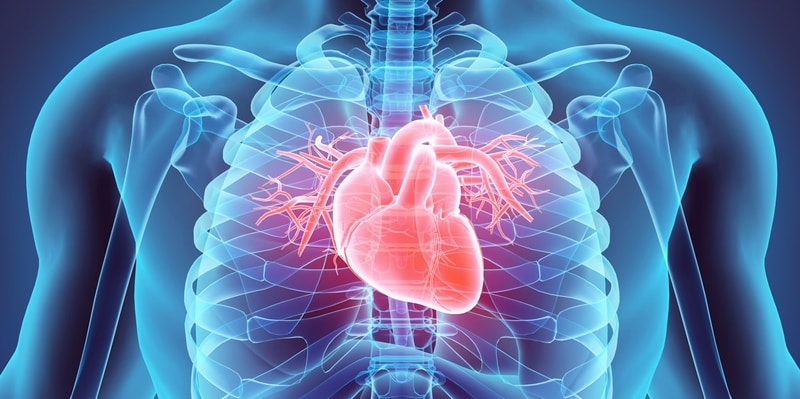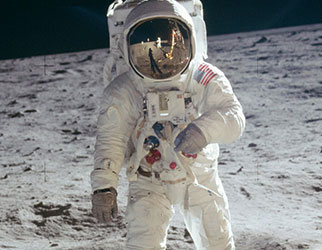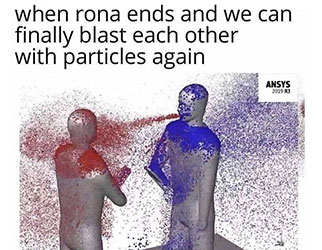Supercomputers Are on a Mission to Mend Broken Hearts

Follow the big blue and yellow arrows for three rights and two lefts.
There it is, in the center of IKEA: a POÄNG armchair inside a glass cube, with a robotic arm tirelessly smashing it with a 110kg weight for 260,000 cycles.
The showcase demonstrates the durability of the birch veneer and sleek-back design, showing off how many Netflix binges the statement piece will survive in your living room.
And if you stand around for long enough, you’ll discover the answer. The POÄNG is rated to endure the weight of your body sitting and standing 66 times per day over a five-year span.
Now imagine inside the glass box is an artificial aortic heart valve. Weights aren’t what’s testing the limits of its structure. The nickel-titanium device is subjected to the relentless beating of the ultimate stress test: the human heart.
Our heart is a busy organ. It pumps oxygen around the body. It maintains blood pressure. It falls in love and breaks into pieces and does it all over again.
It’s a tall order, and not all hearts are up to it. So we turn to help. Medical professionals install between 75,000 and 100,000 valve implants into our hearts each year in North America alone.
Testing the viability of these life-saving implantables is more complex than shoving a weighted pad against a POÄNG. A replacement heart valve undergoes more than a few twists and flexes. It needs to stand the test of time against blood pressure, flow conditions, and wear from tissues and interstitial fluids.
Although there are obvious similarities between bodies, their inner workings are still a mysterious frontier. Our hearts beat at different rates; some are wearied by disease. There are puzzles tucked into its nooks and crannies. To develop devices able to withstand this complicated structure requires a hyper attention to detail, a little TLC—and a supercomputer capable of running outrageously complex simulations.
Engineering the keys to heart health
Enter Steve Kreuzer and the masterful problem-solvers at Exponent. Steve and his team are experts at testing the lifetime of technology, including the tiny devices charged with running our hearts.
Their expertise lies in finding limits by exploring the conditions that could lead to early structural failure. Or, they come in after the fact, a squadron of engineering detectives akin to the NTSB investigating a plane crash. Using advanced calculus equations, they put all sorts of devices and components through the virtual wringer.
That’s right: in this division of Exponent, they do it all with computers. By borrowing the finite element method from aerospace engineering and suspension bridge design, Exponent uses all kinds of calculus equations to evaluate how an implantable will function alongside the machinations of the heart. They can test stresses and strains and see how slight modifications can improve a design’s longevity.
After all, you want something responsible for running your heart efficiently to do so without fail. Fortunately, the FDA feels the same way. Steve and his team crank out high-fidelity, ultra-detailed data models to achieve government approval and finally let these life-saving technologies into your body.
When the heart skips a beat
Celebrities like Mick Jagger and Kevin Smith have benefitted from these advances in structural heart implantables. But of the approximately 100,000 patients who receive one each year, they’re more likely your parent, your neighbor—or the dean of your university.
Take Tom Broussard, whose story is featured in the “At the Heart of Simulation (Part 1)” episode of the Big Compute podcast. He’s a Navy veteran and holds a PhD. He was eating well, staying in shape, and enjoying sports like baseball and squash while serving as Associate Dean of Heller School at Brandeis University.
But in 2011, he felt a tug in his chest.
Doctors stuck a patchwork of electrodes to his chest to measure his heart rhythm and blood pressure while he performed a series of workouts. Uncomfortable with the results, they then ordered a cardiac catheterization lab: a special procedure where a medical team pokes and prods at your arteries to monitor blood flow.
Doctors found arteries 80, 90, even 100% clogged. They ordered the unthinkable for this fit academic: a quadruple bypass. After many months on the mend, his body had another unwelcome surprise in store: he suffered an ischemic stroke.
Tom underwent another period of lengthy recovery, finally rounding the corner back into life by traveling and jumping back into the sports he loved.
Then, there was another tug at his heart.
His replacement aortic valve had dangerously narrowed, a condition called stenosis. After a few more medical near-misses, Tom skyrocketed to the top of the transcatheter aortic valve replacement, or TAVR, list. In this procedure, doctors piloted a tiny device folded up like an umbrella up an artery in his groin. When it reached its destination, they popped it open to install a new aortic valve. This time, an artificial replacement engineered by the miracles of super compute.
The team at Exponent wants to answer the questions for innovators developing these devices, like “will it work?” and “will it last?” For an octogenarian, a Tour de France winner, a heart attack patient, or even a baby? So Exponent uses “conservative scenarios,” subjecting devices not to the housing of a heart in pristine health, but under far more challenging conditions.
“It’s valuable to understand what a healthy heart is going to do, but it’s far more valuable to understand what a diseased heart is gonna do and what that’s going to look like.”
–Steve Kreuzer, Managing Engineer at Exponent
Strides in supercomputing have exponentially improved the level of detail Steve and his team can run in simulations of the heart. By linking up with high performance computers on the cloud via the Rescale platform, they can increase the amount of data they can churn through and reduce the time it takes to do it.
The power of supercomputer simulations in medical device development
The Saturn V rocket contained three million parts. When an engine flared up aboard Apollo 6, it took months of detective work by thousands of engineers to sort through it all to find the problem: a tiny 6” section of a liquid hydrogen fuel line that flexed to the point of cracking during launch.
When working with life-saving technologies, time is of the essence. When organs fail and implants are needed, we don’t have weeks, months, or years to find an answer.
We need them now—and computational models are expediting discoveries.
Our hearts are much smaller than a J-2 engine, but inside the fist-size structure is a labyrinth of veins, arteries, flaps, electrical charges, and chambers that make life possible. Teams like Steve’s condense the manual legwork of this important detective work down into heavy-duty mathematical equations, allowing researchers to find answers by crunching the numbers—far faster than ever before.
Hop into the detective seat and perform your own rudimentary stress test at home.
Grab a paperclip! Like the owl testing how many licks to the center of the Tootsie pop, bend it back and forth and count the number of cycles until it snaps in half.
This mini exercise will yield durability against five or six bends, but the FDA wants implanted medical devices to survive 400 million loading cycles. If it took you less than 10 seconds to perform this at home, buckle up: it’ll take you about twelve years to run this many cycles by hand.
Your heart takes about 3.5 seconds to hit three beats at rest. But simulating three heartbeats on a computer requires an arduous amount of data. To churn through it, even a heavily networked connection can take hours. When your heart beats about 3 billion times over the course of your lifetime, running this level of simulation is out of the question for most computer systems. Without access to the limitless power of compute, it would be impossible to perform the kinds of tests Exponent is most interested in.
Larissa Lewis is a content writer who thrives in the cut of complex ideas: on daily hikes she wanders through the underbelly of hyperreality, ponders how AI cohabits with human thinking, why birds named Veeries can better predict hurricanes than expert computing models, and how she as a DIY cryptologist can perfect her homemade Enigma machine.
Just a couple of decades ago, procedures like TAVR, the one Tom Broussard received, were unheard of. But advances in in silico medicine, or research aided by computational models, have aided in developing new technologically driven ways to mend a broken heart.






